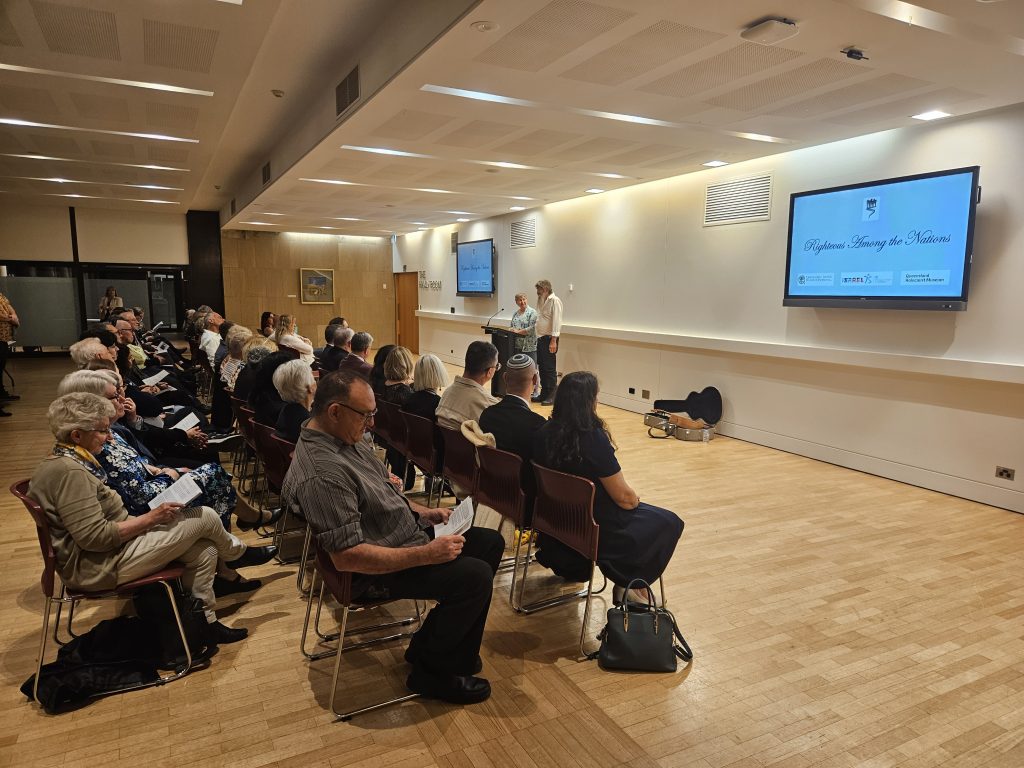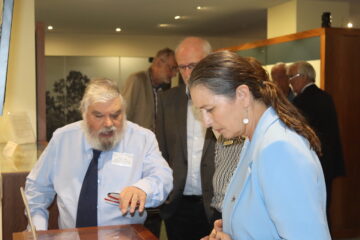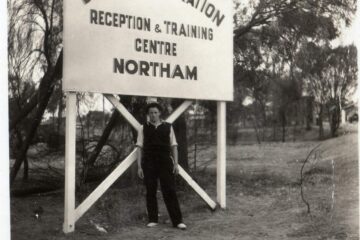On 30 August 2023 Arend Reinirus and Catherina Berendina Brugman-Harmes were posthumous awarded the title: Righteous Among the Nations by Mr Chris Cantor the Deputy Chief of Mission of the Embassy of Israel in Australia. The medal and certificate were received by their granddaughter Mrs Anne-Marie Buttigieg. Her grandparents with 5 children emigrated to Australia in 1954.
The following information is from presentation booklet handed out during the ceremony.


THE RESCUE STORY
On 11 August 2021 Yad Vashem recognized Gerrit Jacob Et Hendrika Antonia Kramer (Harmsen) and Arend Reinirus Et Catharina Berendina Brugman (Harmsen) as Righteous Among the Nations.
What follows is the official history of the actions of the Kramer and Brugman families during the war, as researched and compiled by Yad Vashem. The Brugman and Kramer families are related through sisters Hendrika (Hetty) and Catharina (Riny). Both families played an indispensable role in saving the lives of Dutch Jews during the Holocaust. Their stories are presented together here.
***
Gezina (Siny) Franken was born in 1924 in Arnhem to her parents Mozes and Susanna Franken (Bachrach). Three years later her brother Raphael (Rudi) was born. Mozes was a book printer. The Jewish Community in Arnhem was very close and the family was well integrated; both in the Jewish community and in the local community. Siny and Rudi went to a public school but received Jewish lessons too. The first years of the war Siny worked in a stationery store, until she had to go into hiding.
Mozes Franken was ordered to report to Germany, but he refused to go, saying ‘If they need me, let them come and get me’. In the beginning of October 1942 an unknown man brought the family to hiding addresses. Siny was brought to the Kramer family in Arnhem; the parents with Rudi to another address. Mozes Franken’s youngest sister Alidina (Annie) Franken (b. 1904) had arranged these addresses; she was active in the resistance under the name ‘Rie Bakker’. Annie had dyed her hair and assisted more relatives going into hiding. Annie wore a necklace with a golden cross, trying to look Christian, but nevertheless she was caught and she perished in Auschwitz in January 1944.
Siny was welcomed by the Kramer family at the Jagersweg in Arnhem, in the Dutch province of Gelderland. The family consisted of father Gerrit Jacob Kramer (b. 1903), his wife Hendrika Antonia (Hetty) Harmsen (b. 1903), two sons (Jan and Gerrit) and one daughter (Anne). After some time, another hider arrived: ‘Hansje’, a Jewish baby. His parents were hidden in Amsterdam. Hetty Kramer once took him to visit his parents in Amsterdam, but at the moment she arrived the house was being raided, and she barely escaped. Gerrit Kramer worked at the rationing distribution office and helped the hiders to obtain food coupons. He was once interrogated about this, but he pretended not to know anything. Many Jewish fugitives were assisted by the Kramer family, who sheltered them in their own home or arranged shelter for them with acquaintances.
For example, Hein Muller (b. 1908) slept over with the Kramer family during raids on a few occasions. Moreover, Gerrit Kramer took care of food coupons for Hein and his wife Rebecca Gesina Frank (b. 1912) for the entire duration of the war.
Jacob and Rozetta Menko (Rozetta was a sister of Mozes and Alidina Franken) lived with their three children Truitje Louise, Emmy and Siegfried Bernard in Amersfoort. The Kramer family found them a hiding place in Varsseveld, but they were betrayed and perished.
The Kramer family had made a special hiding place in the attic, which was accessible through a hatch in the ceiling. Here Siny hid only in times of danger. One day the Kramers’ house was raided after a betrayal. Fortunately, Siny was not found, even though the soldiers asked Anne, the rescuers’ youngest daughter, if she knew who Siny was. As young as she was, she didn’t say anything.
After that it became too dangerous at the Kramers. Siny was transferred to Arend Reinirus (Arie) and Catharina Berendina (Riny) Brugman (also in Arnhem). Riny was Hetty Kramer’s youngest sister. Here Mozes and Susanna Franken and their son Rudi were already hiding and, to their great joy, the Franken family was reunited. Hansje was forwarded to the Brugmans as well. Hein Muller was also sheltered for a couple of days with the Brugman family in September and October 1942.
After the Allied defeat at the Battle of Arnhem, the inhabitants of the city were evacuated. Little Anne Kramer had died during the bombings. The Franken family had to leave and ended up in Hoogeveen. While residing in a church with many other evacuees, the Frankens were betrayed and arrested. From there they were transported to Camp Westerbork. Fortunately, all transports to the east had already ceased by that stage of the war. On 12 April 1945 they were liberated by Canadian soldiers.
Neither the Kramer, nor the Brugman families received any money for their help during the war.
Siny married Kees Hopaf in 1950 and they had two daughters, one grandson, three granddaughters and many great grandchildren. Rudi Franken drowned as a soldier on a mission in Indonesia in 1947.
Riny and Arie Brugman immigrated to Australia after the war. Siny visited them there for their 50th wedding anniversary in 1989, where Siny recited a beautiful poem in which she thanked them for saving her life.
Hein and Rebecca Muller remained close friends with the Kramer family; every week Hein and Rebecca brought them chicken and eggs.


The couple had already earlier – in 1983 – received Dutch recognition for their resistance wok. They were awarded the Verzetsherdenkingskruis (Resistance Commemorative Cross).

See also: Righteous Among the Nations


